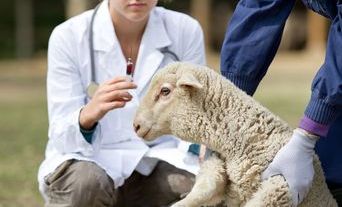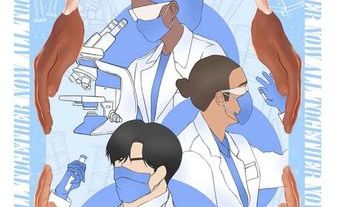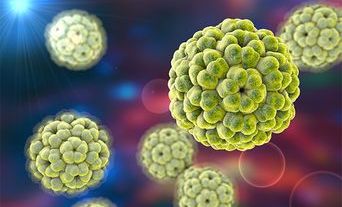The health of humans and animals has always been interconnected. Veterinary pathologists and microbiologists play a vital role in developing a greater understanding of disease processes and treatments that not only help animals, but also humans.
What is veterinary pathology?
Veterinary pathology encompasses three disciplines (veterinary anatomic pathology, veterinary clinical pathology and veterinary microbiology). The Veterinary Pathology Specialty Advisory Committee (SAC) is made up of members from across the disciplines together with industry, government and academia. The SAC ensures that the veterinary pathology community is represented across the profession, and it provides guidance on training through the College’s Exams team and the provision of training events.
Veterinary anatomic pathology encompasses the examination and interpretation of pathological changes present in both tissue biopsies and in cadavers of animals. These examinations frequently form an essential step in reaching definitive diagnoses – in the live animal in the case of biopsy examination and retrospectively in the case of post-mortem examination. In many instances, post-mortem examinations can have an important auditing or forensic role within diagnostic investigations, creating a clearer understanding of the causes and sequential development of disease. Information gleaned from such examinations provides veterinary clinicians and surgeons with an evidence-based approach to the treatment and disease control options for the animals under their care.
Veterinary clinical pathology is the review and analysis of blood and cells taken from any veterinary patient, from an aardvark to a zebra and everything in between.
Veterinary clinical pathology is the review and analysis of blood and cells taken from any veterinary patient, from an aardvark to a zebra and everything in between. Veterinary clinical pathologists cover blood cell examination, plasma/serum chemistry, hormone analysis and infectious disease screening. They review samples taken by needles from tumours, other masses or fluids to identify pathological processes and assess how we can best treat our veterinary patients.
Veterinary microbiology involves the isolation, culture and identification of bacteria, viruses and fungi from clinical samples taken from all animal species. Samples may be taken from either live animals or cadavers at post-mortem examination. Veterinary microbiologists also undertake antimicrobial sensitivity testing assays to determine the level of antimicrobial resistance (AMR), thus informing veterinary clinicians on the most appropriate antimicrobial treatment. Veterinary microbiologists also play an important role in infection control in veterinary practices and hospitals and contribute to veterinary public health.
Key achievements in veterinary pathology
The Coombs test
Professor Robert Royston Amos Coombs (1921– 2006) graduated as a veterinary surgeon from the University of Edinburgh in 1943. In 1945, while undertaking a PhD at the University of Cambridge, he developed (in conjunction with colleagues) the Coombs test – a test that is used in veterinary (and human) medicine to this day. The test identifies whether the patient has antibodies to their own red blood cells, which results in a condition that destroys these red blood cells known as immune-mediated haemolytic anaemia. The rapid diagnostic confirmation of this disease allows life saving treatment to be initiated as early as possible.
Feline leukaemia
Professor William ‘Bill’ Fleming Hoggan Jarrett (1928–2011) graduated as a veterinary surgeon from the University of Glasgow. In 1964, during his time at the university, he discovered the retrovirus feline leukaemia virus, a cause of feline lymphoma and leukaemia. Further research and characterisation of the virus resulted in the development of a vaccine.
Mad cow disease
The neurological disease, also known as bovine spongiform encephalopathy (BSE), was first described in 1987 by the veterinary neuropathologist Gerald Wells.1 The initial discovery of BSE in cattle resulted in the implementation of national and international statutory BSE control measures.Celebrating notable veterinary pathologists
Professor Peter Biggs
Professor Biggs was a renowned veterinary surgeon working in infectious poultry diseases. Professor Biggs gave the name Marek’s disease to a tumour condition in poultry and he and his group determined that it was caused by a herpesvirus. Peter later developed a vaccine for the disease. He also described a novel disease in turkeys – lymphoproliferative disease of turkeys – which he and colleagues showed was transmissible and was likely to be caused by an oncovirus. He was elected a Fellow of the Royal Society in 1976. In 1989, Peter was awarded the Wolf Prize for Agriculture. He was made a Commander of the Most Excellent Order of the British Empire (CBE) in 1987.
Professor Stan Done
Professor Done is a veterinary pathologist and an international recognised expert in pig pathology. Professor Done has written over 300 communications and five veterinary textbooks that have become essential reads (including a Colour Atlas of Veterinary Anatomy of the Dog and Cat) for veterinary students and qualified veterinary surgeons. Stan has worked in government and academia, raising the profile of veterinary pathology especially in research and surveillance settings. In 2005, he won the prestigious David Black Award for his valuable and sustained contribution to the British pig industry.
Professor Donald Kelly
Professor Kelly is a veterinary pathologist with a career spanning more than 50 years. Professor Donald Kelly has been an advocate for veterinary pathology. Through his involvement with the Royal College of Pathologists and the European College of Veterinary Pathologists, he has established the standards of training and experience required for the development of specialists in veterinary pathology in Europe. Donald’s career has involved research and academic pathology and he has contributed to more than 200 scientific publications. His book contributions include Colour Atlas of Veterinary Cardiology: Canine Nephrology and Notes on Pathology for Small Animal Clinicians, which provides a basic guide for practitioners on how to make the best use of pathology in clinical practice. In 2015, he received the Honorary Fellowship of the Royal College of Veterinary Surgeons (RCVS).
Dr Catherine Payne-Johnson
Dr Payne-Johnson is a 1977 Liverpool veterinary graduate and one of only eight women in her year group of 40. During her career, she was awarded Fellowship of both the Royal College of Pathologists and the RCVS. Through her work in academia, she provided a significant contribution to veterinary pathology education at both undergraduate and postgraduate levels. In parallel, she has worked as a veterinary pathology diagnostician and her wide range of publications on topics as diverse as avian respiratory disease and small animal oncology are testament to the variety of her pathology diagnostic service.
Dr Katherine Whitwell
Dr Whitwell is an RCVS-recognised specialist in veterinary pathology (equine), a Fellow of the RCVS and a Diplomate of the European College of Veterinary Pathologists. Following graduation as a veterinary surgeon from Liverpool in 1965, she went into mixed practice prior to joining the Animal Health Trust's Equine Research Station in Newmarket. Katherine worked at this institution as an equine pathologist for 24 years, latterly as section head of pathology. In 1993, she set up the Equine Pathology Consultancy, working as a consultant to both the Animal Health Trust and Rossdales Laboratories. Alongside her work as an equine pathologist, she has also contributed to knowledge of wild hare pathology, perhaps most notably in her descriptions of leporine dysautonomia and identification of its similarities to equine dysautonomia.
Dr Irene McCandlish
Dr McCandlish graduated from Glasgow Veterinary School in 1973 and has published many articles. Publications include significant works on canine respiratory disease, in particular vaccination against Bordetella, which was identified as a key component of kennel cough. In 1981, she was awarded the G Norman Hall medal by the RCVS for outstanding research into animal diseases. She is recognised as a passionate advocate for pathology throughout her career in university research and diagnostic laboratories. Many veterinary clinicians will recall having little chats with Irene, after they told a junior member of her team that they should not need a history to make a diagnosis and being duly converted by Irene to the wisdom of a full and comprehensive history provided with every subsequent pathology submission.
Key challenges facing veterinary pathologists
Training
There are many training opportunities for veterinary pathologists and microbiologists in the UK’s 11 veterinary schools and at the University of Dublin. It is also possible to train within veterinary diagnostic pathology laboratories and within the pharmaceutical industry; opportunities also exist for training at government laboratories. Despite this, we still need additional funding to continue to provide these opportunities. We need more graduates to join our specialties, as there is often a shortage of qualified individuals to provide the knowledge and expertise needed to meet the challenges of the future.
We need more graduates to join our specialties, as there is often a shortage of qualified individuals to provide the knowledge and expertise needed to meet the challenges of the future.
The One Health initiative
Veterinary pathology is integral to One Health, which aims to optimise the health of animals, humans and environment. Our insight from studying different species and how all our veterinary patients interact with diseases, or families of diseases, provides us with a valuable perspective when looking at diseases that impact companion animals, farm animals, wildlife and humans.
Antimicrobial resistance and optimising treatment Antimicrobial resistance is a global issue and is just as much a problem for our veterinary patients as for humans. The emergence of AMR makes treating infections more difficult and can subsequently influence animal health and welfare. However, significant progress has been made in reducing the use of antimicrobial in animals through a number of antimicrobial stewardship schemes. Veterinary microbiologists play an important role in the diagnosis of infections in animals and helping to reduce the emergence of AMR through stewardship schemes. They are also key to controlling zoonotic diseases (those that can be transmitted from animals to human).
Early tumour detection
The search is ongoing to develop improved, non-invasive techniques to allow early detection of tumours and better characterisation, thus optimising treatment. This area is particularly challenging as tumours will often behave differently in different species.
Diagnosing hyperadrenocorticism
The elusive search for the ‘perfect’ diagnostic test for hyperadrenocorticism (HAC) in dogs, the equivalent of Cushing’s disease in humans, is another challenge for veterinary pathologists. This condition is caused by an excess production of corticosteroids, which may also be produced as a natural response to stressful situations, including other illnesses. Identifying HAC correctly allows appropriate treatment to be provided. Inappropriate treatment, or lack of treatment where needed, may lead to ongoing hormonal imbalances, making it more difficult to control other illnesses, such as diabetes mellitus, which are often present with HAC.
This article was written with contributions from various members of the Veterinary Pathology SAC.




